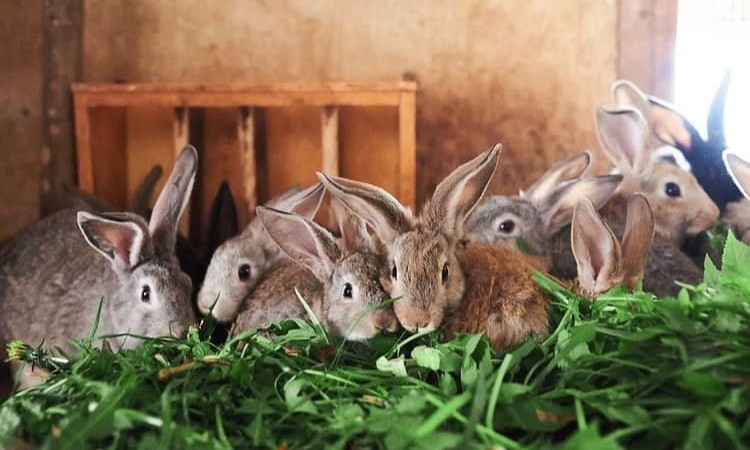

– Fresh grasses or legumes should be included in the ration to a level of 70%.
– 50% legumes plus 50% grasses may afford minimum dietary requirement for resting does and bucks.
– Dustiness of mash should be avoided by adding water to moisten the feed slightly.
– Prevent feed from becoming sour, since sour feed is not liked by rabbit.
– Clean and fresh water should be made available at all times.
– Does should not be fed with heavy diet right after kidding.
– Feed of does should be increased after 5 – 7 days after kidding.
– Abrupt change in the quality or quantity of feed should be avoided.
– Molasses at the rate of 5% should be added to the diet to increase acceptability of the diet.
– A small quantity of hay/straw should be fed in addition to the compound feed to prevent boredom and to provide bulk.
– Rapeseed oil meal should be heated before inclusion in the diet. It should be fed below 15% levels in diet.
– High calcium diet may interfere with the acceptance of does to the offspring and thus may affect the growth of the litters, therefore diet should not contain excess calcium.
– Dry does, bucks and replacement stock should be fed once a day at the rate of 100 – 120gm of pellet feeds.
– Young rabbits in growing stages and lactating does should be free fed by keeping grain/pellets in the feeder at all times.
– Good quality legumes should be kept before the rabbits in addition to pellet ration.
– Carrots, Green grass, Spinach, Turnip, Lucerne, barseem etc. should be provided as is a good succulent feed for rabbits.
– Other feed stuffs such as kitchen wastes, spoilt milk, damaged fruits may be fed by small-holder farmers, but they should be fed with caution considering their deleterious effects.
 Contact Jaguza Support
Contact Jaguza Support